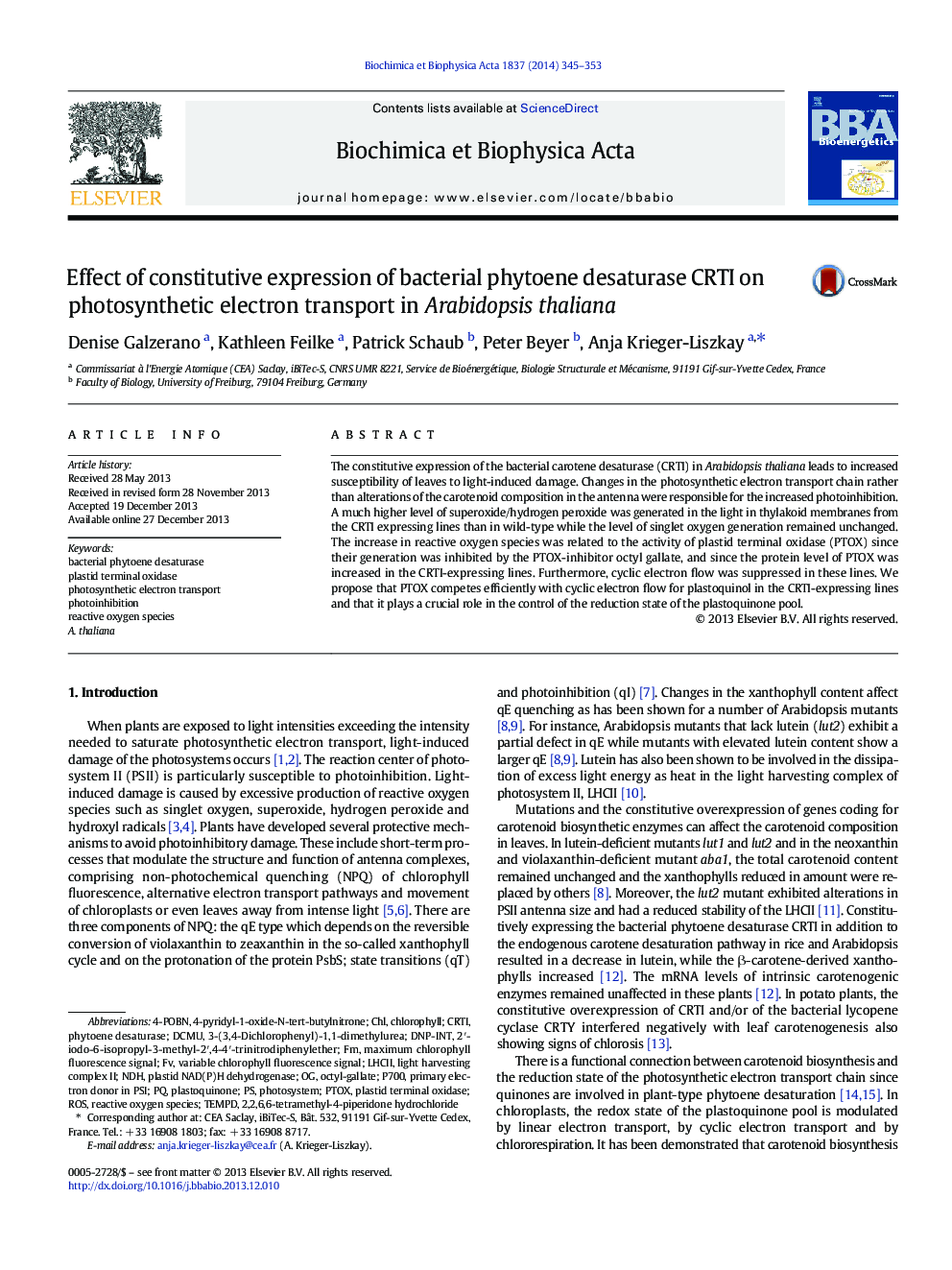| Article ID | Journal | Published Year | Pages | File Type |
|---|---|---|---|---|
| 1942191 | Biochimica et Biophysica Acta (BBA) - Bioenergetics | 2014 | 9 Pages |
•A. thaliana expressing bacterial phytoene desaturase (CRTI lines) were analyzed.•Non-photochemical quenching was almost unaltered in CRTI lines.•CRTI lines generated more reactive oxygen species and suffered from photoinhibition.•CRTI lines had a higher amount and activity of the plastid terminal oxidase.•The effect of PTOX on the redox state of the plastoquinone pool is discussed.
The constitutive expression of the bacterial carotene desaturase (CRTI) in Arabidopsis thaliana leads to increased susceptibility of leaves to light-induced damage. Changes in the photosynthetic electron transport chain rather than alterations of the carotenoid composition in the antenna were responsible for the increased photoinhibition. A much higher level of superoxide/hydrogen peroxide was generated in the light in thylakoid membranes from the CRTI expressing lines than in wild-type while the level of singlet oxygen generation remained unchanged. The increase in reactive oxygen species was related to the activity of plastid terminal oxidase (PTOX) since their generation was inhibited by the PTOX-inhibitor octyl gallate, and since the protein level of PTOX was increased in the CRTI-expressing lines. Furthermore, cyclic electron flow was suppressed in these lines. We propose that PTOX competes efficiently with cyclic electron flow for plastoquinol in the CRTI-expressing lines and that it plays a crucial role in the control of the reduction state of the plastoquinone pool.
